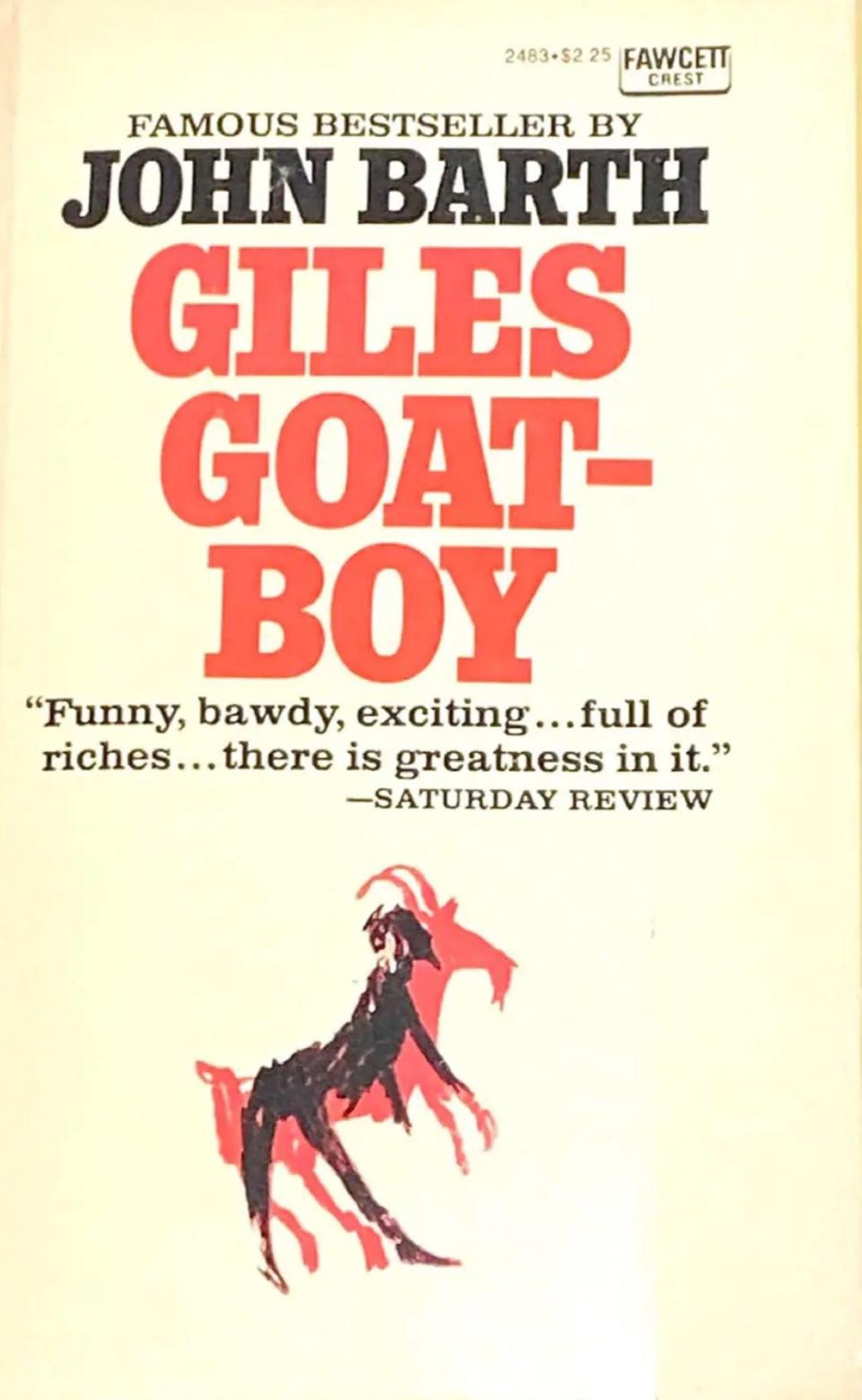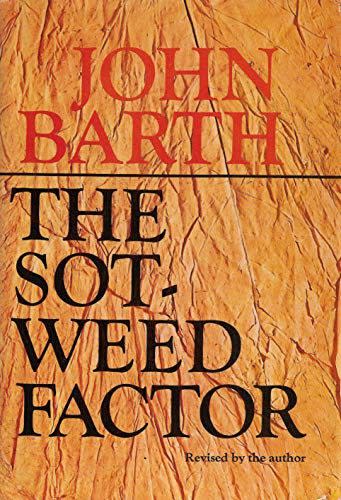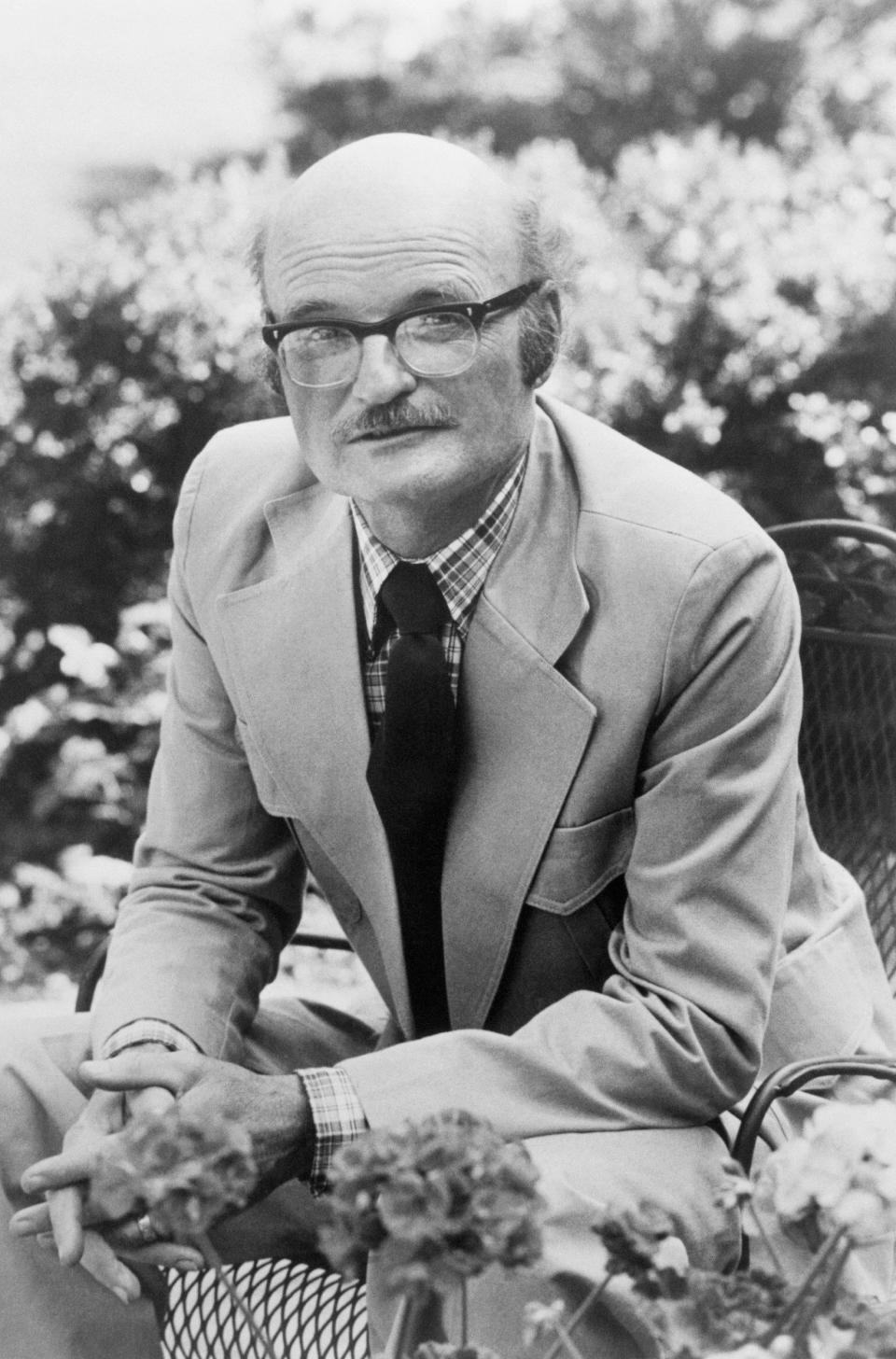John Barth, author whose novels Giles Goat-Boy and The Sot-Weed Factor became a cult – obituary

- Oops!Something went wrong.Please try again later.
John Barth, who has died aged 93, was the American author whose books – Giles Goat-Boy, for example, or The Sot-Weed Factor – earned him a particular place in the world of offbeat writing; he gained enormous critical and popular attention with nearly two dozen novels and collections of essays and short stories.
Curiously, he seemed to be read as much by those who failed to grasp what he was on about as by admirers who really believed they had a handle on what he was saying. Reviewers likened him to Swift, Rabelais, Nabokov or Joyce, but some simply labelled him incomprehensible. Of the 700-page Giles Goat-Boy, Jane Shilling, writing in The Daily Telegraph in 1991, remarked: “There were many uses for this tome – doorstop, table mat, offensive weapon – but I do not recall ever seeing anyone actually read it, or ever meeting anyone who could give a coherent account of what it was about.”
Yet from the outset Barth’s work attracted the kind of acclaim that leads to literary prizes. He became a cult in the US where his birthday was marked by an outpouring of letters from his fan club, The Society for the Celebration of Barthomania.
Barth liked to quote Horace in Ars Poetica, enjoining a young writer to use stories familiar to his audience. Thus they would not be distracted by having to follow strange plots and would have time to appreciate the spinning afresh of a thundering good yarn.
Following this principle, he dug into the classics of the Middle Ages and antiquity, tearing legends and fables apart, reusing them in different settings with his own casts of insane characters.

In the Johns Hopkins University library in Baltimore Barth experienced the excitement of discovering The Arabian Nights and The Decameron. He pored through The Panchatantra and his eye was caught by Gesta Romanorum, medieval tales of chivalry, and the lives of the saints.
The Old Testament he found to be a bottomless well of themes, while a favourite character was Scheherazade, perhaps because she, like him, was a storyteller. He was endlessly diverted by the stories of Ali Baba, Sinbad the Sailor and the rest, with which Scheherazade entertained her murderous husband for 1,001 nights.
While turning the classics to his use, Barth employed a wild writing style all his own, full of epigrams, word plays and tortuous plot diversions. Barth once said he found it difficult to write realistic dialogue and therefore decided that it was a bad thing to attempt it.
John Simmons Barth was born at Cambridge, Maryland, on May 27 1930. After high school he attended the Juilliard School of Music in New York but left to study journalism at Johns Hopkins; he took his BA in 1951 and an MA the following year.
He had gone to the Juilliard intending to study orchestration, and later on he would refer to himself as an arranger, a reference to his method of using classical themes as the foundation for his stories. In The Friday Book: Essays and Other Non-Fiction (1984), he noted that his “chief pleasure is to take a received melody – an old narrative poem, a classical myth, a shopworn literary convention – and, improvising like a jazzman within its conventions, reorchestrating it to its present purpose.”
Barth taught at Pennsylvania State University and at the State University of New York, returning to Johns Hopkins in 1973 as Alumni Centennial Professor of English and Creative Writing. His first novel, The Floating Opera, full of characteristic linguistic exhibitionism and games-playing, appeared in 1956. A lawyer, bored with it all, is on the verge of suicide until it strikes him that suicide would be about as pointless as everything else in his life. It was a runner-up for the National Book Award.

His next, the nihilistic The End of the Road (1958), was followed by the 800-page The Sot-Weed Factor, set in colonial Maryland and voted one of the 20 best post-war novels in a poll of authors and critics. A parody of 17th-century picaresque novels, it had a bawdy plot which some readers found reminiscent of Tom Jones.
Giles Goat-Boy or The Revised New Syllabus of George Giles our Grand Tutor (1966) did indeed have passages about a boy brought up as a goat but who eventually discovers he is a boy, but the work was characterised by dozens of wild and often incomprehensible subplots.
He once told an interviewer that he had set out to write a new, comic Old Testament. What emerged was certainly comic. Two campuses at a single college, representing East and West, are each under the control of computers. Giles is raised as a goat on the farm of the college’s agricultural department and finally discovers he was conceived by a virgin with the help of the West’s computer, reckoning he must be The Saviour – or at least a Saviour.
The book spent three months on the New York Times bestsellers list, though one critic said: “There is something here to offend everyone.”
Among his other novels were Sabbatical: A Romance (1982); Tidewater Tales (1987); and Don’t Count On It: A Note on the Number of the 1,001 Nights (1984). Lost in the Funhouse: Fiction for Print, Tape and Live Voice (1968), a collection of short pieces for various media, was nominated for a National Book Award.

The award finally went to Barth for Chimera (1972), three related novellas retelling myths in which he drew on the stories of Perseus, Scheherazade and Bellerophon.
Letters (1979) was a huge, dense novel of 800 pages, in which characters from his previous novels write to Barth. One reviewer admitted: “I don’t know what it’s about,” while another called it “brilliant and witty and damn near unreadable”.
In 1991 came The Last Voyage of Somebody the Sailor, in which a 20th-century navigator sails back and forth between present-day Maryland and the medieval time when Sinbad was spinning his fables. “It is possible to dimly perceive the plot, concealed beneath thickly encrusted layers of Eastern-style verbiage,” wrote Jane Shilling in the Telegraph.
Three years later, Once Upon a Time: A Floating Opera, revisited his 1956 novel The Floating Opera: sailing in Chesapeake Bay, Barth encounters scenes and characters from his previous novels. He drew on the 1956 book again in Coming Soon!!! (2001). His final novel was Every Third Thought: A Novel in Five Seasons (2011), about a creative writing professor planning to visit Shakespeare’s birthplace.
John Barth married, in 1950, Harriette Anne Strickland; they had two daughters and a son. The marriage was dissolved in 1969, and the following year he married Shelly Rosenberg; she survives him with his children.
John Barth, born May 27 1930, died April 2 2024

